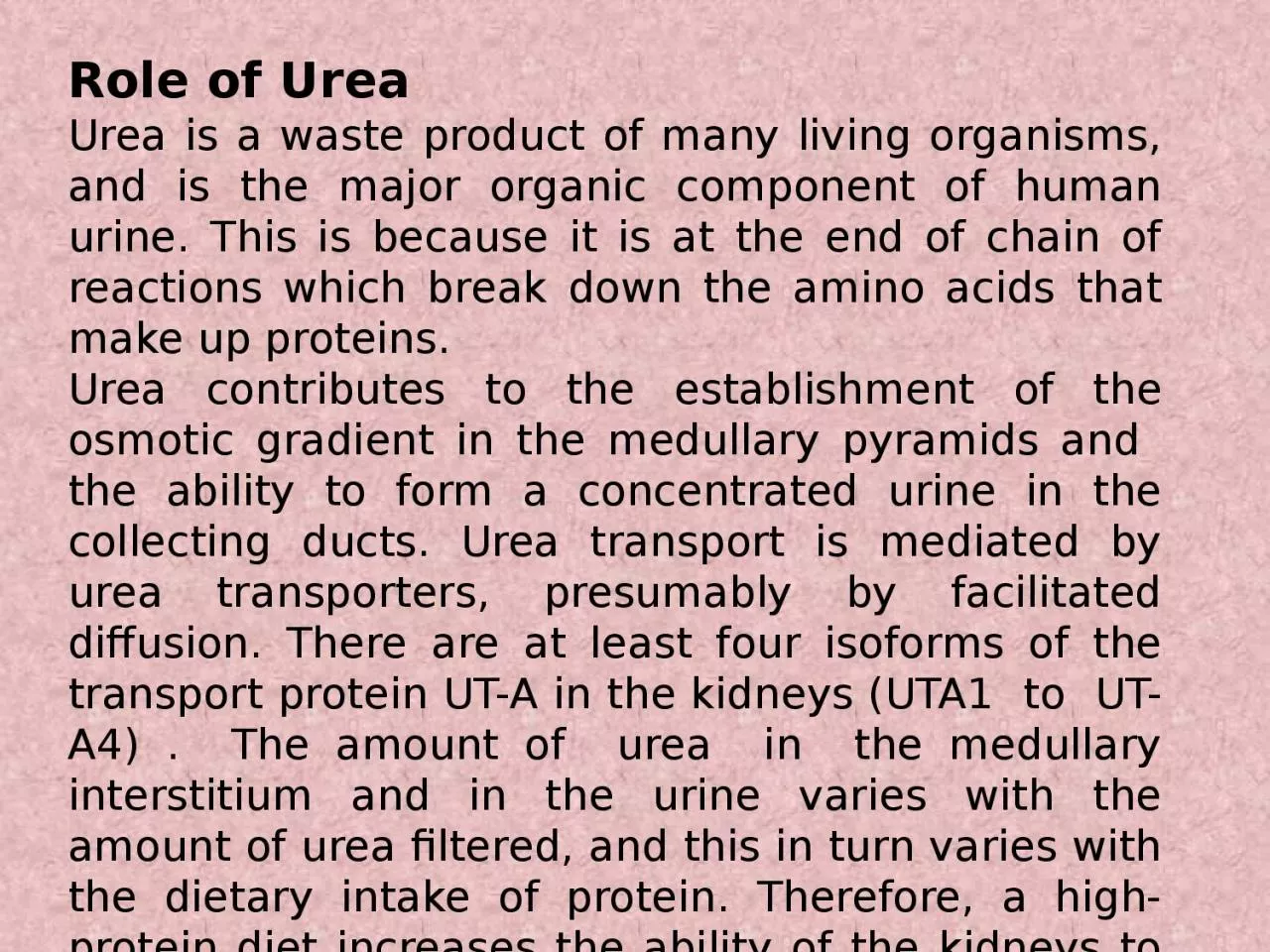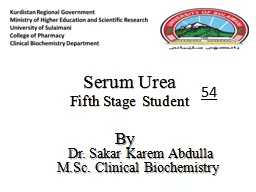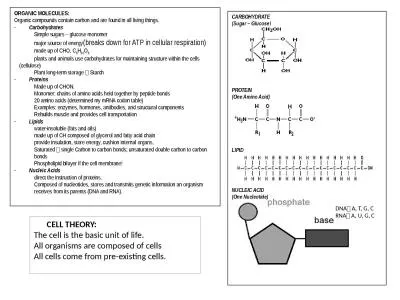PPT-Role of Urea Urea is a waste product of many living organisms, and is the major organic
Author : amber | Published Date : 2022-06-11
Urea contributes to the establishment of the osmotic gradient in the medullary pyramids and the ability to form a concentrated urine in the collecting ducts Urea
Presentation Embed Code
Download Presentation
Download Presentation The PPT/PDF document "Role of Urea Urea is a waste product of..." is the property of its rightful owner. Permission is granted to download and print the materials on this website for personal, non-commercial use only, and to display it on your personal computer provided you do not modify the materials and that you retain all copyright notices contained in the materials. By downloading content from our website, you accept the terms of this agreement.
Role of Urea Urea is a waste product of many living organisms, and is the major organic: Transcript
Download Rules Of Document
"Role of Urea Urea is a waste product of many living organisms, and is the major organic"The content belongs to its owner. You may download and print it for personal use, without modification, and keep all copyright notices. By downloading, you agree to these terms.
Related Documents














